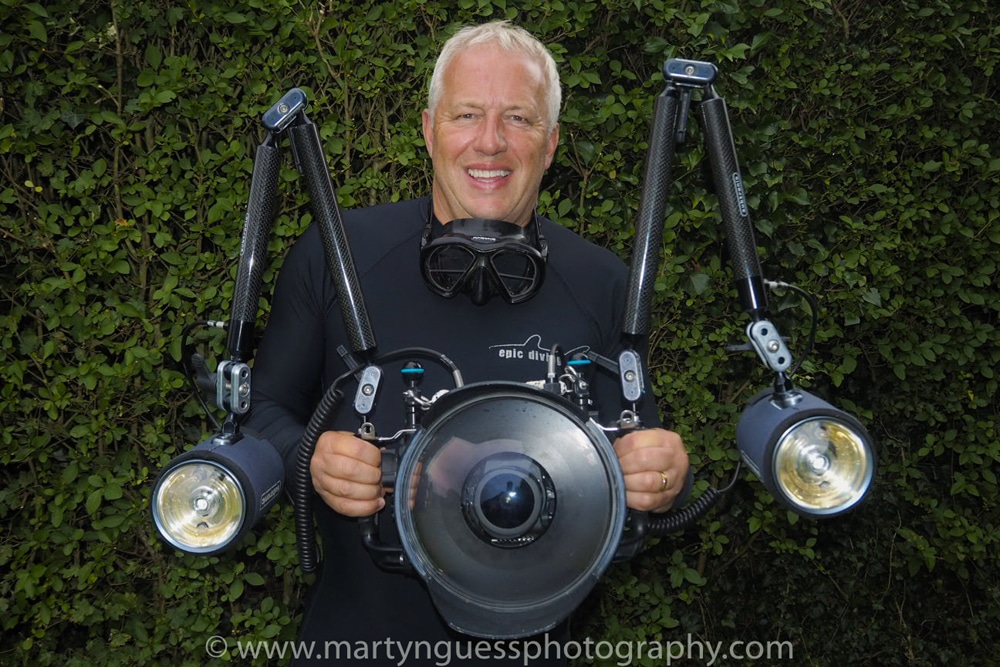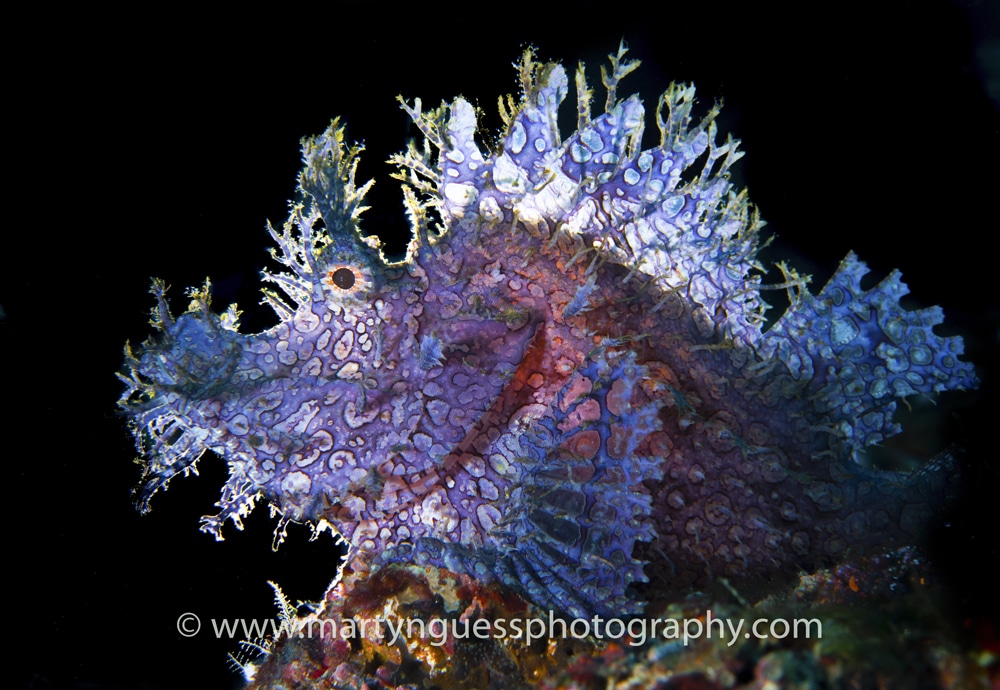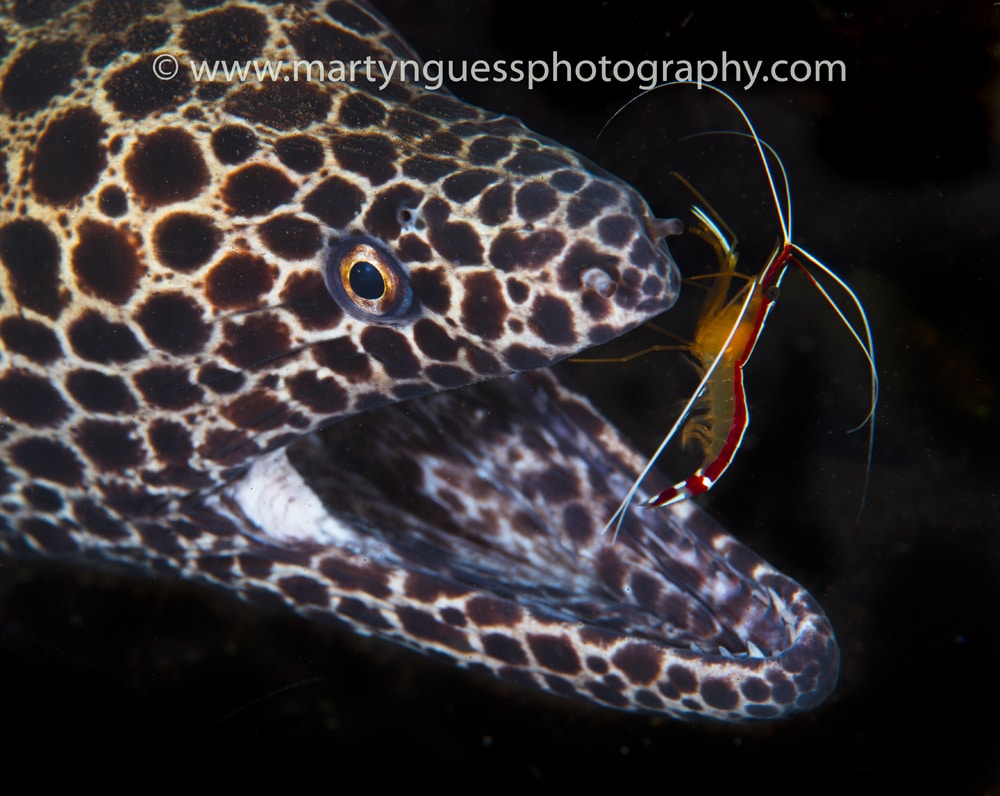News
Scubaverse Underwater Photographer Interview: Martyn Guess
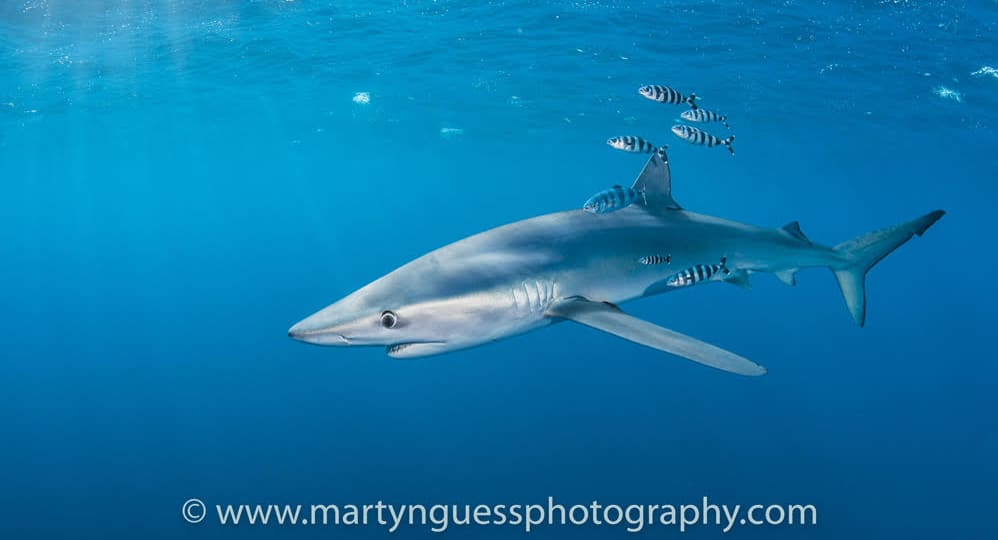
In an ongoing series, Scubaverse’s Underwater Photography Editors Nick and Caroline Robertson-Brown talk to underwater photographers from around the world that they admire. In this blog: Martyn Guess…
My diving career started in the late 1970’s when a family friend took me underwater in southern Spain. An interesting experience given that he managed to knock my mask off with his fins on the first dive! I was amazed by the colours and fish life and very keen to pursue the sport, although it wasn’t until quite a few years later that I went through the formal training process, together with my eldest son, and we both qualified on his 12th Birthday at Stoney Cove in the UK.
Since then, and over the last 22 years, I have dived all over the world and visited some amazing places and seen some wonderful things.
I have travelled extensively through Indonesia and the Philippines and have managed to build up an extensive portfolio of weird and wonderful creatures which I primarily post on Instagram.
I have had a fair amount of success with national and international competitions and I am now passing on some of my knowledge as I teach underwater photography, primarily by running photographic workshops with Scuba Travel, but I also do some one to one courses in the UK. We are going to the Azores in September with a group following a research trip there last summer and also Anilao, Philippines in May and Bali in October. I am keen to take photographers to the best places and some new destinations. I have recently become Chairman of Photosub – the Surrey based group of underwater photographers started by the late Len Deely; we have some very talented people in the club.
N&C: How did your underwater photography start?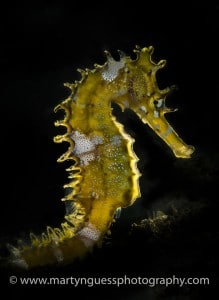
MG: A couple of years after I qualified in 1995 I went on holiday to Grand Cayman and found myself diving with Cathy Church, who with her husband Jim wrote the definitive book on the Nikonas V film camera for underwater use. I had been a keen land photographer since college days and was fascinated by some of the images in her shop, so it only took a day or two before I signed up for a course with her. I have to say I was immediately smitten and on the slippery slope!
When I got back home I went to see Alan James in Bristol and bought the same camera. For those that don’t know the Nikonas it was a great little camera but focus was achieved by guesswork and setting the F stop to an open aperture giving you infinity, or little prongs that stuck out from the lens for macro and close up use when a smaller aperture was selected. The idea being to get the subject between the prongs – no mean feat! You were also limited to 36 exposures with no real idea of how the images would look until the film had been processed. However, despite all of this I was hooked and used the Nikonas for quite a few years until digital cameras started to come onto the market.
N&C: What is your favourite u/w camera equipment (past & present) & why?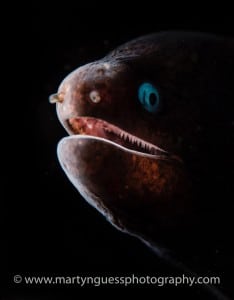
MG: I currently use a Nikon D5 which is a truly amazing camera. One of my favourite tools to use with the camera is the Retra LED Snoot which only allows a small amount of light from the strobe to hit the subject. You can isolate subjects from the background and where the subject is on a mucky bottom or distracting background this can be really useful in creating images that leap off the page. They are easier to use than people think and I teach the techniques on my workshops. It is always rewarding to see people reap the benefits of this type of lighting.
The Retra is so much better and easier to use than the old snoots that I had to make from plumbing parts, as the strobe modelling light shines through the snoot and is magnified so that it can be easily aimed. When I first started snoot lighting most of my images were totally black as it was pure guesswork where the light would land and often I had to nab my wife Sue to hold the bits of pipes over the subject!
N&C: What would be your advice to anyone new to underwater photography?
MG: I recommend going on a one to one course with an expert if you can afford it. This will cut out a lot of wasted time trying to work it out on your own. There is a lot to take on board such as equipment choice, lighting, angle of view, getting in the best position, camera settings etc and a course will put you on the right path. It’s exactly what I did years ago and my photography came on leaps and bounds as a result.
Get to know your camera and other equipment. Try and understand the settings and what they do. If this becomes second nature on land it will be so much easier underwater. Many people come to underwater photography without any knowledge of what the various camera settings really do and how they work together. Any good course will normally start with making sure that there is a good understanding of the basics of using the various settings together to achieve a good result.
Read the books written by the experts such as Alex Mustard or Martin Edge. Take your time and make sure you understand what you are reading. These guys take great images and in their books, they tell how they do it! Join a regional underwater photography club and BSOUP. There is a fountain of knowledge out there and in my experience members are very happy to help and offer advice to people starting out. All have regular meetings where there are useful presentations and the opportunity to enter competitions so that you can gauge how you are doing.
Consider going on a specific photography dive trip. There are quite a few of us leading these trips now. You will learn so much in the field and with help on hand above and under the water. I get students who can’t believe how much they learn in a week or two. They come home with portfolios of images that they never thought they would achieve.
Make sure that your diving skills are up to scratch. You are a diver first and a photographer second! Excellent buoyancy is a prerequisite if you are going to manoeuvre yourself into a good position to take a photograph without crashing into the reef or the bottom.
Above all else don’t get disheartened. Practice, Practice and Practice and the results will start to get better.
N&C: What, or who, has been your single biggest inspiration for your underwater photography?
MG: I would say without a doubt my friends Martin Edge and Alex Mustard. I have been on so many trips with both of them that sooner or later something had to rub off on me! I would look at their images and then determine that I was going to somehow take them myself. Nowadays, their inspiration and the many excellent photographers there are around the world drives me to try new techniques and to constantly perfect my image making.
N&C: What image are you most proud of and why?
MG: There is no specific image but I am proud of my recent back lit and snooted macro subjects such as Thorny Sea horses and Weedy Rhinopias. They are tough to light but the results can be spectacular. Also I have been into shark photography for the last couple of years and am very pleased with some dusk shots with Great Hammerheads and also open ocean Blue Sharks in the Azores. Sharks are amazing but you have to put yourself in the right position at the right time to get good images and be prepared to get very close!
N&C: Where is your favourite dive location, and is it for the photography?
MG: I would have to say Raja Ampat and definitely for photography. This is primarily due to the health of the corals and sea life. There is such a huge amount to photograph and if you are there when the bait fish shoals are around, the sight of them and all of the predators circling combined with the coral and the colours is simply breathtaking.
N&C: What are you views on marine life manipulation, moving subjects?
MG: Quite simply – dive and look, but don’t touch or harass anything! I teach on my workshops that if a subject is in the wrong place or facing the wrong way then move on. There will be another better opportunity as the dive progresses. From my experience people get blinkered by the guide spotting something maybe quite rare and in their eagerness to get a shot of this rare critter they snap away and don’t really think whether it is in a good position or whether the image they create will be a keeper. When they review their images in camera, and realise that perhaps the subject is not in a good position, some people can perhaps be tempted to try and get a better image by moving the critter. Maybe they have seen, as we all have, a guide (who is only seeking to please his client) move a subject and think this is quite acceptable behaviour. It might have been more prevalent in the past but is definitely a no-go area now. Sea life and the marine environment is so fragile that we all have to do what we can to help protect it and ensure that there is something left for future generations.
N&C: What do you look for when you are making your images?
MG: I am always trying to create an image which is not simply a record shot of the subject and often a different perspective, be it lighting, camera blur, lens bokeh or angle of view. There are so many great photographers out there that I am always striving to not only come up with something different but to perfect the shot as best I can. I am a stickler for the detail and getting the composition, lighting and focus right. I go through phases with a specific technique and will hammer this until I get what I want. The subject doesn’t need to be something exotic, it can be a common subject but maybe photographed in a different way, so I concentrate on looking for something which is in a good position and which will enable me to do what I want to do creatively.
N&C: What motivates you to take u/w photos?
MG: It’s my ability to record the underwater world that drives me. I am fascinated by the fact that new species are being discovered in the World’s oceans every year. I remember seeing a coffee table book years ago with a pygmy seahorse on the cover. I had never seen one and didn’t even know they existed. Without that photograph, I wouldn’t have been driven to find out where it was taken and to go there myself and then to be able to show other people what fascinating creatures live under the surface.
N&C: If you could photograph any one thing/place what or where would that be?
MG: I have quite a few things on my bucket list. Top of this is any of the great Whales. One day I hope to get to somewhere I can do that. I also want to photograph Great Whites!
To find out more about Martyn’s underwater photography trips with Scuba Travel click here.
Marine Life & Conservation
Steve Backshall to headline Shark Trust’s flagship event: For the Love of Sharks

Join a host of amazing, shark loving, speakers including Steve Backshall and the Shark Trust team for an evening celebrating shark conservation at the Royal Geographical Society in London this November.
Date: 29th November 2024
Time: 6-10pm
Location: Royal Geographical Society, London
Tickets: https://www.sharktrust.org/Event/flos24
The event will be a celebration of all things shark. Those lucky enough to get hold of tickets will hear from engaging guest speakers with a passion for sharks.
The line-up includes (*subject to change if unforeseen circumstances arise)
Steve Backshall: One of television’s busiest presenters, BAFTA award-winning wildlife expert Steve has been passionate about the wild world ever since he was young.
Steve’s impressive TV career has taken him all around the world, investigating a wide array of species and environments. Steve has filmed over 100 hours of children’s wildlife programmes with the BAFTA award winning Deadly 60 franchise and recently, with Sky Nature, for his new series ‘Whale with Steve Backshall’. He has been a patron for the Shark Trust for 10 years.
Simon Rogerson: is a photojournalist specialising in natural history, diving and the sea.
He is editor of SCUBA magazine, the official journal of the British Sub-Aqua Club. Simon started his career as a crime reporter but gravitated towards his ‘less depressing’ interest in underwater exploration, joining the staff of DIVE magazine in 1999. In 2005 he was named ‘Editor of the Year’ in the PPA’s Independent Publishing Awards. Simon also works as a freelance writer, contributing frequently to the Sunday Times and Telegraph, in addition to BBC Wildlife, Esquire, and a host of international diving magazines. He is the author of a book, Dive Red Sea, published by Ultimate Sports. Now based in Berkshire, Simon has been a Patron of the Shark Trust for 20 years.
More speakers to be announced soon. Head to the Shark Trust website to learn more.
The evening will also allow guests the final chance to see the Oceanic 31, shark art exhibition. Some of the artwork will be auctioned/raffled at the event, while the rest will be auctioned online to raise money for the Shark Trust Oceanic Programme.
For the Love of Sharks is an evening with something for everyone who is interested and fascinated by sharks. Join the Shark Trust, their Patrons, Trustees and Staff, along with a host of supporters for this celebration of shark conservation.
For more information or to buy a ticket: https://www.sharktrust.org/Event/flos24
News
Stay Longer for Less at Temple Point, Kenya with Dive Worldwide
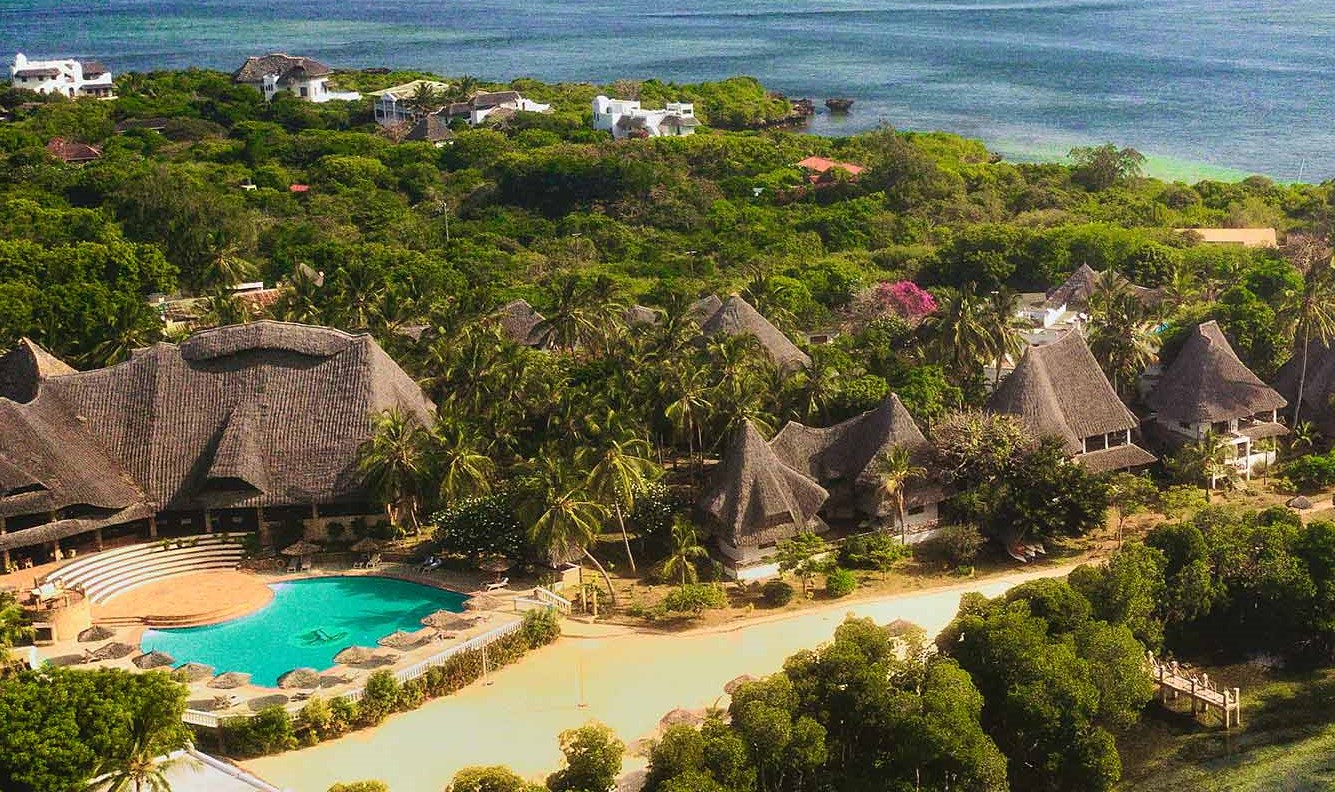
Dive Worldwide has recently introduced Kenya to its portfolio of dive destinations, making it a new must-visit for divers. The company has chosen Temple Point Resort, located in Watamu, a small town on Kenya’s Indian Ocean Coast. The resort embodies the spirit of Kenya, with thatched roof buildings and bright white interiors, complemented with local art. The Creek Deluxe rooms enjoy a creek view and sunset vistas, whilst Boutique Garden rooms offer peace nestled in lush greenery.
An abundance of activities such as golf, stand up paddleboarding and kite surfing await those looking for action; while those in search of rejuvenation may partake in a range of yoga classes, or indulge in the spa. Spend evenings dining poolside dining or lazing in hammocks suspended over the creek; there is no detail missed at Temple Point.
The waters surrounding Temple Point Resort are bustling with life, however, there is also an opportunity to explore on dry land. Tsavo National Park is close enough for a day safari, allowing guests to double up on the wildlife experiences Kenya has to offer, from elephants to whale sharks.
Suggested Dive Itinerary: Dive and Discover Kenya
Embark on an adventure to one of Africa’s finest marine parks, Watamu, the first of its kind in the continent. Created in 1968, Watamu offers excellent diving and snorkelling for those of all experience levels. Lively coral reefs and the surrounding waters are home to over 1,000 species of fish, devil rays, mantas, whale sharks, dolphins and turtles.
DEAL: Stay 12 nights for the price of 10 at Temple Point Resort
Price: Dive and Discover Kenya now costs £2295pp, saving £150 per person. Including international flights from the UK, 12 nights’ B&B (for the price of 10), transfers, 5 days, 10 dive pack, tanks and weights. Based on travel in September ONLY. https://www.diveworldwide.com/trip-ideas/dive-discover-kenya#details
For more information visit: diveworldwide.com or call 01962 302 087
-

 News3 months ago
News3 months agoHone your underwater photography skills with Alphamarine Photography at Red Sea Diving Safari in March
-

 News3 months ago
News3 months agoCapturing Critters in Lembeh Underwater Photography Workshop 2024: Event Roundup
-

 Marine Life & Conservation Blogs3 months ago
Marine Life & Conservation Blogs3 months agoCreature Feature: Swell Sharks
-

 Blogs2 months ago
Blogs2 months agoMurex Resorts: Passport to Paradise!
-

 Blogs2 months ago
Blogs2 months agoDiver Discovering Whale Skeletons Beneath Ice Judged World’s Best Underwater Photograph
-

 Gear Reviews3 weeks ago
Gear Reviews3 weeks agoGEAR REVIEW – Revolutionising Diving Comfort: The Sharkskin T2 Chillproof Suit
-

 Gear Reviews3 months ago
Gear Reviews3 months agoGear Review: Oceanic+ Dive Housing for iPhone
-

 Marine Life & Conservation2 months ago
Marine Life & Conservation2 months agoSave the Manatee Club launches brand new webcams at Silver Springs State Park, Florida


